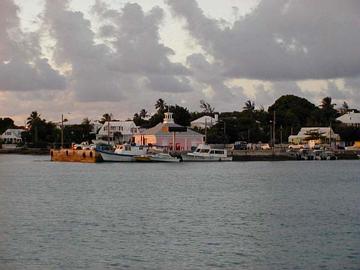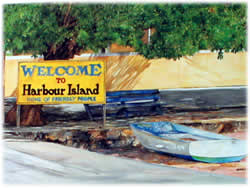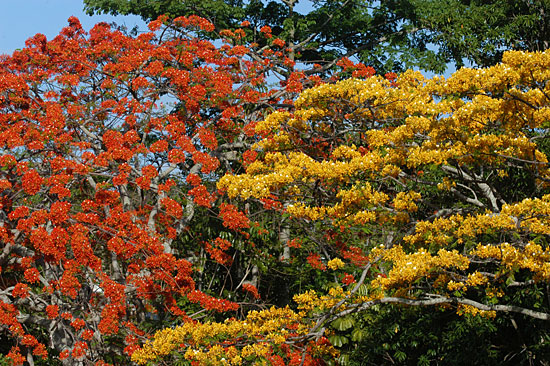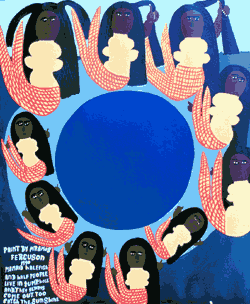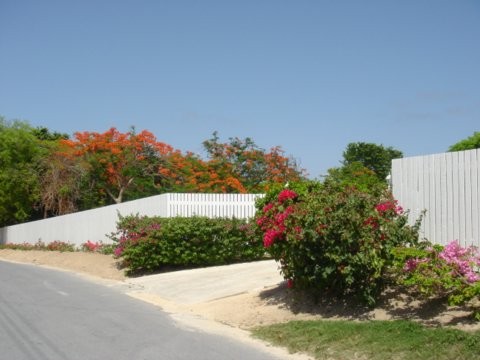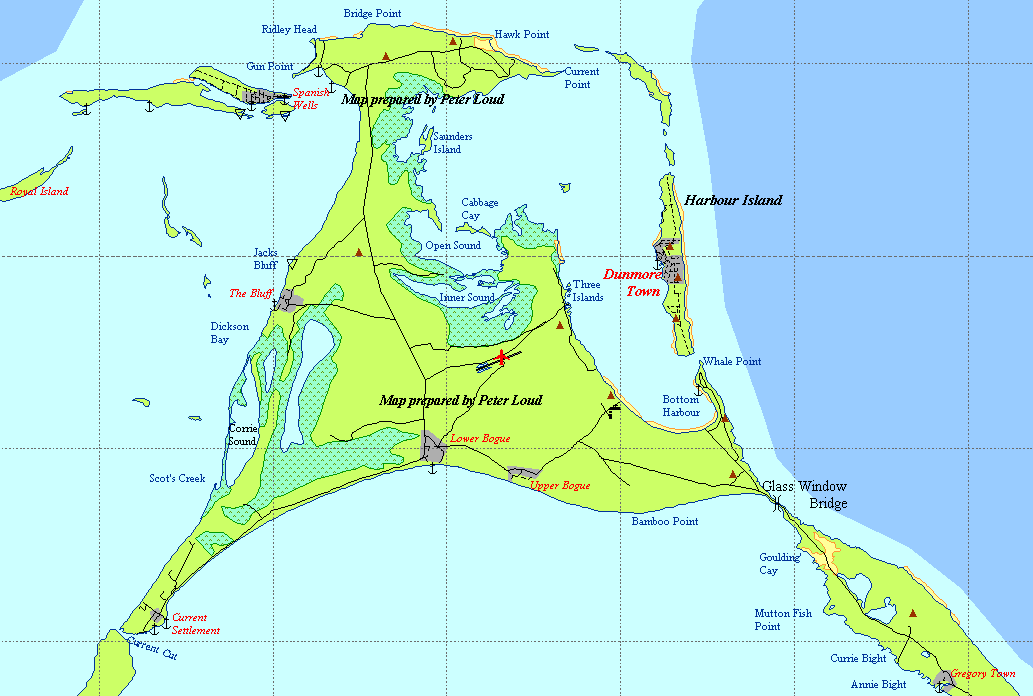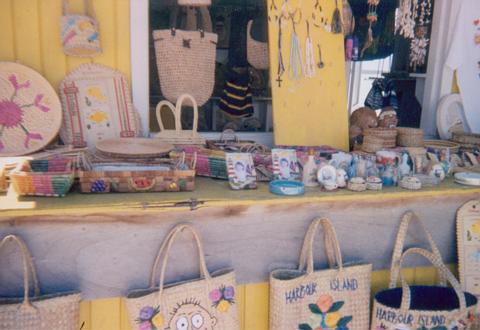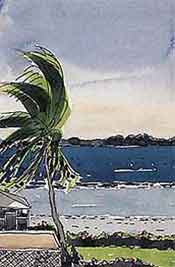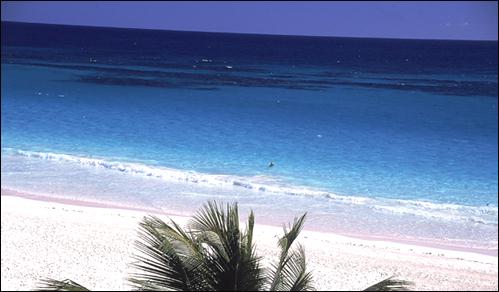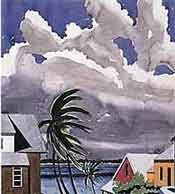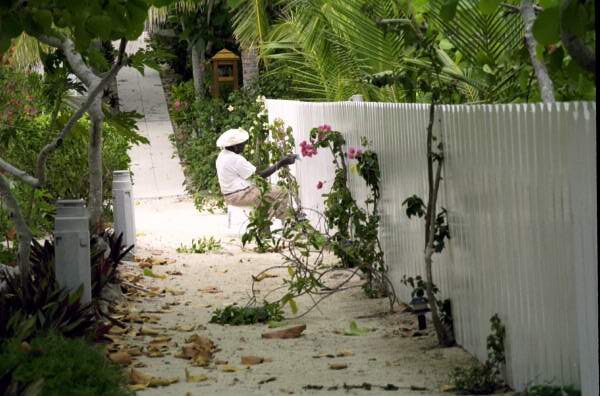A Brief History Documented history records that in the Ninth Century, the first settlers in the Bahamas were the island people, or "Lukku-cairi", who made their way from South America, by way of the Caribbean. Christopher Columbus, named these people Indians, when he discovered San Salvador in the fifteenth century. The people were also known through the centuries as "Lucayans", and "Arawaks." Religious English settlers landed in Eleuthera in the mid-seventeenth century (1647), and on forming the first British colony, became prosperous farming the land. Britain claimed the islands in 1670, along with the problem of piracy, which was endemic, with such characters as Blackbeard, Henry Morgan, and Anne Bonney, plying their trade until 1718, when the first governor, Woodes Rogers, drove them out. Only to be replaced by privateering, which was effectively government sponsored piracy, during Britain's war with Spain. In 1782, during the American Revolution, Spain captured the Bahamas, but only briefly until the Treaty of Versailles, when the Islands, once more became a British colony. The Bahamas' checkered history continued throughout the eighteenth and early nineteenth centuries, with entrepeneurial runners transporting cotton and military equipment during the American Civil War, and rum-running during the Prohibition years of the Roaring Twenties. A period of economic hard times followed until the end of the Second World War, when the Bahamas became a popular tourist destination. The Islands became self governing in 1964, obtaining Commonwealth status in 1969 and independent in 1973. Geography The Bahamas consists of about 700 islands covering 100,000 sq miles of ocean. They start approximately 75 miles east of Florida, and stretch 750 miles south to the Ragged Islands off the coast of Cuba. The land mass is approximately 7,500 square miles only, with most islands being surrounded by coral reefs. The Islands tend to become less vegetated the further south they extend, and in many places cactus is the dominant form of plant life. In the northern and western islands, there is more conventional vegetation with many Palm forests, palmetto and cabbage palm, Mangroves are present on many islands. Political and Economic The Bahamas has become a favorite for international investment, and of particular attraction is the tax-free economy, where there are also no taxes on corporate earnings, or capital gains. The Government also looks favorably upon projects that will provide revenue to the Islands, and streamlines the process to approve this type of activity, especially in the areas of finance, tourism, insurance, shipping and manufacturing. There are a number of experienced law firms in Nassau. The Bahamian dollar is pegged on a one for one basis with the US dollar. Source: Bahamas Media Handbook (1999) THE EXTINCT BAHAMIANS
The people who were living in the Bahamas when Columbus arrived are known today as Lucayans, which has been translated as 'island men'. The Lucayans share a common ancestry with the Taino societies of Puerto Rico, Haiti, Dominican Republic, Cuba and Jamaica, from whom they separated about AD 600 when they began to colonise the Bahamas. By 1492 they had settled all of the larger Bahamian islands as well as many of the smaller cays. The origins of the Tainos are traced to the banks of the Orinoco River valley in Venezuela. There
may have been as many as 50,000 Lucayans living in the Bahamas at
the time of Columbus. But within about two decades they were destroyed
by disease, violence and forced labour. The notes in Columbus' log
are today the only known eyewitness account we have of these original
Bahamians. To put together our knowledge of the Lucayans is still
like completing a jigsaw puzzle with pieces missing. Although, there
are at least 20 Arawak words and their derivatives in the modern English
dictionary -- including avocado, barbecue, buccaneer, canoe,
Carib, cannibal, cassava, cay, guava, hammock, hurricane, iguana,
maize, manatee, potato and tobacco -- the
Arawaks had no written language. In 1983, archaeologists discovered
Spanish artifacts at Long Bay, San Salvador, just yards from a beach
monument to the landfall. These included glass beads, belt buckles,
metal spikes and Spanish crockery mixed with Arawak artifacts. The
Spanish beads were made between 1490 to 1560.Columbus arrived on San
Salvador in 1492 and 1520 depopulated the island. In order to befriend
the natives, Columbus distributed trinkets. To him and his men these
items were of almost no value. To the Tainos, however, the Spaniard's
baubles and beads were rich with magical, supernatural significance,
objects validating the belief that the newcomers were otherwordly.
ELEUTHERA: THE FOUNDING OF THE BAHAMAS Sometime between 1646 and 1648, a group left Bermuda for the uninhabited Bahamas. They Sometime between 1646 and 1648, a group left Bermuda for the uninhabited Bahamas. They named the island they landed on Eleutheria, the Greek word for freedom. This Company of Eleutherian Adventurers included Captain William Sayle and 70 others from Bermuda and England. What follows is the only contemporary account of their arrival in the Bahamas: "On the way to Eleuthera, one Captain Butler, a young man who came in the ship from England, made use of his liberty to disturb all the company. He could not endure any ordinances or worship and when they arrived at one of the Eleutheran Islands, and were intended there to settle, he made such a faction, as enforced captain Sayle to remove to another island, and being near the harbour, the ship struck and was cast away. The persons were all saved, save one, but all their provisions and goods were lost, so as they were forced (for diverse months) to lie in the open air, and to feed upon such fruits and wild creatures as the island afforded." Sayle's claim to the Bahamas lasted for only 20 years. In 1670, after the restoration of the monarchy following the English civil war, the islands were awarded to a group of Royalist supporters known as the Lords Proprietors of the Carolinas. These nobles controlled the colony from London until King George 1 introduced direct royal government in 1718 in the person of Governor Woodes Rogers. The assumption of Crown control was a gradual process, and the surrender of proprietary interest was even more gradual and was not completed until 1787. An Assembly was called in Nassau on September 29, 1729, marking the official beginning of continuous constitutional rule. Today's Bahamian Parliament is the direct descendant of this citizens' assembly. Woodes
Rogers and the Pirates of Nassau
ABOUT
THE ISLAND OF ELEUTHERA Led
by Captain William Sayle, the 70-member band of Adventurers first put
ashore near Governor's Harbour. Disputes rose among the group, and Sayle
and his faction headed off toward the northern part of the island by
boat. Their boat foundered on the treacherous reefs and their supplies
were lost. Many of them starved, but they made do, even living and worshipping
in a cavern that is now known as Preacher's Cave. Just over one mile wide, Eleuthera is more than 100 miles of magnificent pink-white beaches, sheltered coves, dramatic cliffs and incredible blue-green water. Here you can swim, snorkel and enjoy some of the finest diving anywhere, with exceptional dive facilities. Explore the steamship wreck off North Eleuthera and the unusual train wreck, the site of a barge, which sunk years ago, filled with train cars bound for Cuba. Stop at Preacher's Cave where shipwrecked Eleutheran Adventurers once took refuge and held this island's first religious services. Taste the sweet and uniquely delicious Bahamian pineapples grown in Gregory Town. This settlement is also where Atlantic waves roll against the shore, providing some of the best surfing in the Atlantic Ocean. Between North Eleuthera and Gregory Town, you'll find the Glass Window Bridge. This is one of the few places where you can compare the Atlantic with its rich blue waters on one side of the road, to the calm green waters of the Caribbean on the other side, separated by a strip of rock Just wide enough to drive a car through safely.
Harbour
Island By the 1800s, Dunmore Town became a noted shipyard and sugar refinement center. That skill gave the Islanders all-important secondary industry rural. With the advent of Prohibition, Harbour Island became very popular indeed. Today the island's solid popularity is founded on its tropical island greenery stretching out to meet the warm, pink-hued sand beaches this island is famous for. Its intimate resorts,- and the warm Briland hospitality, housed in the quaint New England architecture of the island's Loyalist history, add to Nature's palette. Rows of century-old trees border narrow flower-lined streets. It is a sight not to be missed. You can choose from a number of Harbour-Island hotels offering tennis, fishing and diving. Spanish
Wells Common Flowers of the Bahamas Most of the archipelago of The Bahama Islands owe their color of flora to people rather than nature. When you see a lovely tree like the Pink Poui or Silk Cotton raising its blooms to the heavens or one like the Frangipani wafting fragrances over you on evening breezes, chances are about 1,000 to 1 that man planted and nursed it to bloom.
HARBOUR
ISLAND HIGHLIGHTS
GENERAL
HISTORICAL BACKGROUND WRECKING
HARBOUR
ISLANDERS ASSIST IN ESTABLISHMENT
OF DUNMORE TOWN BRILAND
BOATBUILDING A well-known Harbour Island ship was the Beatrice, which was launched at Harbour Island in 1908. It was built by Sonny Jenks Robers. A 360-ton three-masted schooner, it was built for the lumber trade and was sailed by another son of the main shipbuilder, Captain Lafayette Roberts. Harbour Islanders can boast of the largest ship ever to be built in the Bahamas. The Marie J. Thompson, a four-masted schooner, built by Sonny Jenks, was 696 tons in size and was launched in 1922. EARLY
TWENTIETH CENTURY THE
ROARING TWENTIES THE
SECOND WORLD WAR AND ITS AFTERMATH During the late 1940's and early '50's, Dunmore Town was further modernized. In 1949, electric lights were installed at the school, making it possible for social events and the occasional showing of a movie there. During the next year money was voted to assist in lighting the streets and in 1952 a sanitary inspector was appointed for Harbour Island, and a clinic maintained. In 1953 fire-fighting equipment was imported from England and the water supply system was again expanded and updated. While agricultural production declined, tourism and foreign investment grew and brought economic prosperity to Harbour Island. Today, Harbour Island is a favorite Out Island destination in the Bahamas. BUILDINGS AND SITES OF INTEREST St.
John Anglican Church The
Methodist Church - 1840 Blessed
Sacarment Church The
Commissioner's Residence Fortifications
/ Barracks Hill Loyalist
Cottage and Older Houses Sir
George Roberts Memorial Library (on Dunmore and Colebrooke Streets)
Hill
Steps Fort
Point Cottage Temperance
Square Titus
Hole
HISTORY OF HARBOUR ISLAND 1650-1980
These authors all make particular references to Dunmore Town but this is not sufficient for an island-settlement with such a rich and relevant history. With these facts or thoughts in mind, I have begun to present something useful, informative and legible for people to peruse. My first pamphlet "Harbour Island 1647 - 1973" is on sale locally. Early next year a detailed edition shall be available to the public. The last publication will bring its readers up to date 1988. I pursued a Senior Course in History at the Bahamas Teachers' Training College, 1964-1966. Recently I joined the Bahamas Historical Society. IMPORTANT
AND RELEVANT DATES - HARBOUR ISLAND In 1644 a vessel was dispatched but never returned. A second was sent out in 1645 and it returned that year reporting no place suitable available. About this time, Capt. William Sayle, an ex-governor of Bermuda - businessman, administrator and navigator - came to the rescue. In 1646, he purchased the William of about 100 tons and a small vessel suitable for exploring in shallow water. Four men purchased the ships for this enterprise. Another minister Rev. Willliam Golding, joined William Sayle to England. Three years later, "The Company of Adventures for the Plantation of the Island of Eleuthera" were drawn up as articles and orders of a constitution. The word Eleuthera replaced Bahamas, this word comes from the Greek work meaning "freedom". Ridicule of any person or persecution of any one for his or her religious beliefs was prohibited. Freedom of religion for all and an equal distribution of justice to all were guaranteed. Eleuthera would be a REPUBLIC - with a Governor, a Council of 112, and a Senate of 100. In October 1647, Sayle arrived in Bermuda accompanied by English who wanted to settle a new colony. Probably in 1648 was when William set sail for the Bahamas.
1720
Population of New Providence, 750, Eleuthera, 240, and Harbour Island,
175 Harbour
Island District of North Eleuthera District sends one member to the
Assembly some two hundred and fifty-none years later. Harbour
Island 500 Eleuthera 450 foreign
ports of call was
695 tons.
10th JULY, 1973 The Bahamas became the forty-ninth member of the Commonwealth with its own flag, national anthem, national symbols, and first Governor General - Sir Milo Broughton Butler, age 66 in 1973. Prime Minister, Rt. Hon. Sir, L.O. Pindling, K.C.M.C; P.C··.. Responsibility for Internal and External or Foreign Affairs. This was a step further than Hon. Sir Roland Symonette took the old colony in January 1964. Full Internal Self-government. Governor -British, Premier, Ministerial gov't. with a Senate for the first time. These two drastic steps in the country's constitution affected the little island of Harbour Island greatly. Effects are still being felt to this day. As a matter of fact, there should be an outline of the transition after a certain age in schools. 1979 marked the 250th anniversary of Parliamentary Democracy. Fifth century Greece promoted the Democratic system under PERICLES Government of the people, for the people and by the people. In conclusion, in a democratic government, power goes from the people it does not come down to the people.
|
||||||||||||||||||||||||||||||||||
| OLD
TIMES in the OUT ISLANDS You were a sailor on the big ships. What happened when somebody got sick on those ships? Well, we just used skilled remedies. We carried a slop chest with different medicines. If it's local illness, like stomach pains, or any kind of cuts or bruises we get, we have plaster things to fix it up like that with local medicines 'til we get into port. You know the business of using roots and leaves on this island as medicine. Did you carry these on the ships? We carried Kill or Cure Bush. We carried it in case we got cut. We'll bathe that and then we'll sprinkle it on -it's just the perfect cure. What is it? Kill or Cure Bush. In Nassau they calls it Rooster Comb 'cause it grows like a rooster comb is peaked -that's how it grows-with a white rose. And I believe if it's experimented on, why it'll kill any disease I can cure, or sore, in 48 hours-with that-if I have it to treat myself. Fevers? Yes, we have the herb for the fever. We have the herb for measles, coughs, and tuberculosis. The Kill or Cure, you can drink it. It's external and it's internal. You can use it for bathing if you skin rash, same as if you go and get too much sunburn, you see. You can use that and just let it penetrate in itself, the perfect cure. Then you put Cool Water Boughs with that and Shappa Needle, the three together and you bathe right over that and it's give you the perfect cure. Is the bush on this island? Plenty of it here. I've got it right in my garden. I've got tow trees. I wouldn't be without it. My wife she always takes care of that. I cultivates it in other words. I keep it in the yard so in case if anybody is sick I just come out the door and go there and get it. "Cause besides, you see, there's plenty wild in the bush. But sometimes in the night you can't get up and find it so cleverly and may be raining, and all I have to do is step right our and break what I want and put it on and boil it. What other medicines did they use in the old days? Mostly we carried that and Epsom salts and castor oil. But we carried Kill or Cure in case anybody was cut. And no matter how long you 'ave it, if you break it, why you can keep it for months, and months and months and you boil it and it'll be the same thing. Just the same as Salad Tea out, why you put it in your cup and there goes your tea. My mother never bought tea when I was a boy. 'Cause we knew nothing about Maxwell House coffee or nothing like that. My mother used lime leaf and avocado pear leaves and we used the malaba leaves. They make wonderful tea, better tea than I ever drank, and better for soothing your blood, y'know. And we used the spiced tea, all that we used. Every morning. I knew a lady here, Carrie's mother, who used to make pills out of the aloes. Now you go to any drugstore you'll buy a bottle of aloes bitters, and we have it growing right here in the soil. It's the same thing, only it's converted into liquid. Mama cut a slice every other night. If she give it to us Monday, she'll skip Tuesday, she'll give it to us Wednesday morning-she'll seep it in the can that night. And when she give it to us-me and my brother-she'll give us half a tumbler full. So one morning I was disgusted with taking it -it was bitter and I had a little milk can and I punched a 'ole in mine and my brother betrayed me. You see, I punched a 'ole for it to escape out and mama thought I was drinking it. But my brother, he squealed on me and told mama and said "Arold ain't drunk his own". Said "he let it run out the 'ole." She gave me a good beating about it. It was very good for us, you know. And we had good stomach regulations. We never had no trouble, no stomach trouble, nothin' like that. Seldom anybody was sick in those days - just used those herb medicines. They dropped the aloes, when you cut it, in the burnt stove ashes and they rolled them up in a little ball and call it a pill. Everybody used wood then, you know, wood stoves. They didn't know anything about no gas range and blue flames. And they'd collect the ashes together and cut the aloes and let that drainage drop on that and when they roll it up like that they'd put it aside and make tablets out of it or pills in other words - and every other morning they'd give it to the children. Was there a doctor on the island then? Yes. Doctor Johnson. He was the first native doctor born on this island and he graduated in Montreal and he practiced here. And his son that succeeded him, he was named Doctor Albert too after his daddy. After that we been having foreign doctors but they were two native born. That's why the monument is erected in Temperance Square because the community loved Doctor Johnson so. He also used locally grown medicines? He recommended it yes. You take now - we have the milk week here. If a mother, young mother -that have a young baby or just have a birth, everybody in those days used t nurse the baby from the breast. But today they just get a nipple and Carnation cream, and some of its old and don't know how long it's been canned up, they give it to the child and there it is. But everybody in those days nursed a baby from the breasts. And if they didn't have sufficient milk, they had this mild week that's here now, that he recommended the same doctor. You make a poultice out of those leaves. They used the kerosene lamps and they get the tallow candle and rub over those leaves and they bind them around the breast and overnight , many times, a mother's awake, the milk draining down y'know ,and they get sufficient milk for the baby. They right out here now. There's one in the Methodist churchyard. But very seldom they nurse now. I saw one, it looked strange to me. I saw my granddaughter. I saw her nursing a little baby she just had, about a month old. And it looked so strange to me. I told he it's the first time I've seen a baby nursed in I don't know the year. Any other medicines Harold? They had a garden Aralia here. They used it for garden decorations and for tuberculosis. Then we had the crab bush for stomach pains. Say you was anywhere over in the jungle walking' round and if you have pain in the stomach, common pain, you just pick off those leaves, if you know the herb and you could just chew those herbs and swallow the juice. Tell me about the Aralia bush. The Aralia Bush is boiled and you drink that with a little bread soda-put a little bread soda in the cup when you boil it and that's what you drink for tuberculosis. It kill the cough and it cure the tuberculosis. It kill the cough almost instantly. You see it's the bread soda that's put in there. 'Cause you might say, it's something like Eno Fruit Salts. When you turn in the water, why you see it foam up, foam up , and when you put the bread soda in, that foams something similar. Now you drink that while it dissolves-you drink it- and if you having a cough well then in a day or two that cough will just check up. Any other bushes? Yes. They use the cool water bough - that's good. Blue Fower leaves, that's what they use for constipation. You see, these people now they go to a doctor and get castor oil, but in days past they get the Blue Flower leaf. It grows at the Pink Sands and there's some up this road. I'll bring you a leaf and let you see how it is. It has a blue flower. It has a stalk that comes up on the top and little flowers that are stuck all around that tube that comes up-all around- and then they have a round kind of shaped leaf, kind of diamond shaped. That's what they use for constipation. They boil it up? Yes, they boil it up, of course, and drink it as a tea. You can add sugar - the sugar we had then used to be brown sugar. You just dash it - you don't want it too sweet -just add a little brown sugar to it, you see, that'll cause it to work much quicker. In a couple of hours why then you got a regulation. To be continued -- What To See Harbour Island Old Dunmore Town: The original capital of the Bahamas with its quaint clapboard houses built in the 17th century, are a photographer's delight. Colorful blossoms of tropical hibiscus, bougainvillea's, and oleander spill over into the narrow streets from well-kept gardens, small boats pulled upon the beach, and a big fig tree-landmark of the shipbuilding days-under which the local gentry gather to discourse. Pink Sand Beach: Yes, it is really pink. It's broad, generous, self-protected and soft to the touch of your toes, and is on the Eastern Shore, only minutes away from any point of town. Loyalist Cottage: This historic building dates from 1797. Standing in Bay Street on the island waterfront, it is an eye-catching reminder of the island's past. The Little Boarding House: This building on the corner of Bay and Murray Streets, was the first hotel on the island. Wesley Methodist Church: Located on Dunmore and Chapel streets, this church was built in 1843 and has a fine interior. Commissioner's Residence: At the corner of Goal Lane and Colebrook Street, was built on the former property of Lord Dunmore who was Governor of the Bahamas from 1786 to 1797 and the last Royal Governor of Virginia. Renown for the various buildings constructed under his governship, he built a summerhouse at Harbour Island in 1790 and also a fortification known as Barracks Hill. Dunmore House was demolished in 1912 and a new house, the Commissioner's Residence, was built for L800; being completed in 1913. Dr. Johnson's Memorial: This was erected in memory of Dr. Albert Johnson M.D.J.P. (1837 -1895) a native of Harbour Island. He was the first qualified Bahamian doctor. It stands on the corner of Dunmore and King Streets. St. John's Anglican Church: Originally built in 1768, this church is one of the oldest foundations in the Bahamas. St. John's was severely damaged in hurricane Betsy in 1965, and is now beautifully restored. Sixty-Six Steps: There are sixteen steps on Bay Street cut out on of solid rock in the 17th century by a convict. The steps are most likely named after the year in which the work was done. Sir George Roberts Memorial and Library: Located on Dunmore Street, it was erected in memory of Sir George Roberts. (1906-1964) A native of Harbour Island who was for many years a Member of Parliament, and the first President of the Bahamian Senate. (Jan. 1964 -June 1964) Old Guns: These six ancient cannons are to be found at the island's southern tip (South Bar) They were used during the 17th century to defend the island from the pirates who infested the Bahamas and the West Indies at the same time. Roundheads: Located on the very south end of Bay Street. In the 17th century it was one of the shore batteries, which protected the island. Cannons, chains and a large water cistern lined with square bricks imported from England remain today at Roundheads as a reminder of earlier fortifications. Higgs Sugar Mill: This building standing in Bay Street was one of three sugar mills on the island which produced sugar and syrup to be shipped to the United States. Glass Windows: On the mainland of Eleuthera, five miles south of Harbour Island, a strip of land where the island is nearly dived. The rocks rise to a height of seventy feet, yet there is a bridge used regularly by natives. Many times a ship in the Atlantic has been tossed about, and the crew looking across the narrow, will see a ship resting quietly on the other side: hence the name, "Glass Windows". World's Largest Coconut: Located on Barracks Street at the VIC-HUM CLUB. Music, dancing under thestars, basketball, ping-pong. Conch Town Restaurant. 333-2161. |
